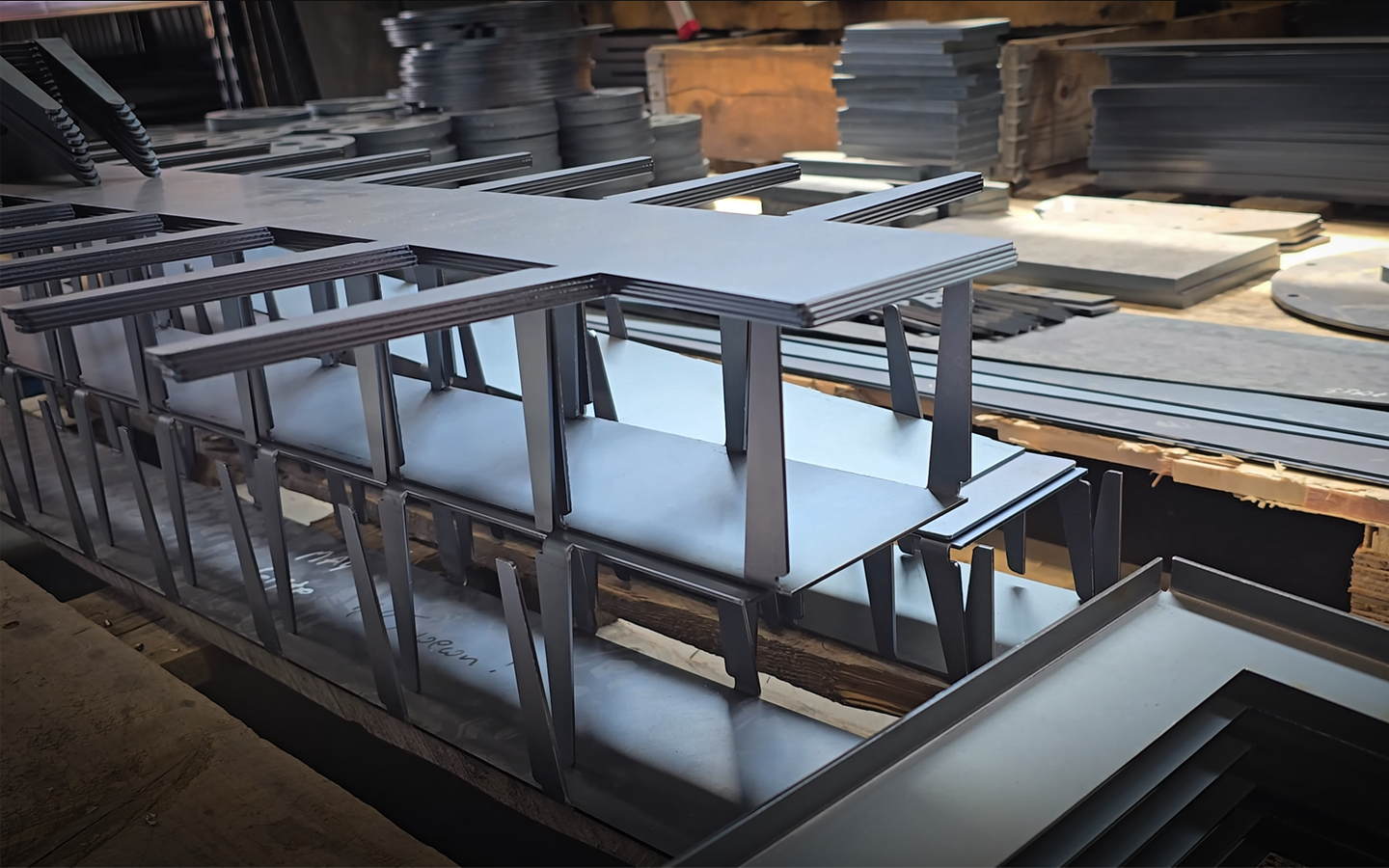How Laser Cutting Transformed Manufacturing Processes
With a focus on innovation and efficiency, today’s industry is constantly on the lookout for new technologies that can speed up and improve manufacturing processes. One such disruptive technology is undoubtedly laser cutting. With this in mind, below we take a closer look at how the introduction of this technology has revolutionised production processes in companies in the metals sector, bringing significant benefits in terms of both quality and efficiency.
Challenges before the introduction of laser cutting
Companies specialising in the production of metal and plastic components for the automotive or engineering industries faced a number of challenges before the introduction of laser cutting technology. After all, traditional methods such as cutting with mechanical shears, band saws and punching machines were used to cut metals. Although these were effective, they had their limitations. These included low cutting precision, very high material consumption due to conventional cutting methods and limited flexibility. Therefore, companies could not afford to carry out complex projects that required precise, irregular shapes. In addition, the multi-step process of tool preparation and calibration increased lead times, which was not satisfactory for customers expecting fast production.
In order to meet the increasing demands of the market and improve their competitive position, many companies have decided to invest in modern laser cutting machines. The most common technologies used for this purpose are CO2 laser cutting and fibre laser cutting, which can be successfully integrated into existing production lines.
Changes in production processes following the introduction of laser cutting
The introduction of laser cutting technology brings a number of positive changes to production processes, which translates directly into opportunities for companies. We are mainly talking about:
A significant increase in precision – Thanks to laser cutting technology, companies are now able to achieve precision cutting with an accuracy of 0.01 mm. This has eliminated the problem of uneven edges and burrs, which means that products do not require additional machining. This has reduced production times and lowered the costs associated with finishing work.
Reduced material waste – Laser cutting has allowed a more efficient use of material. This is because such a machine is able to cut complex shapes with minimal material waste, significantly reducing waste. In the case of expensive metals such as stainless steel, the savings are particularly noticeable.
Increased production flexibility – Thanks to laser technology, companies can successfully complete more complex and demanding projects that were previously impossible using traditional methods. Customers can thus order products with irregular shapes and complex designs, making the company more competitive in the market.
Reduced lead times – The use of laser cutting has also significantly reduced the time needed to process orders. Thanks to automated processes and the lack of tool calibration, production preparation time has been reduced to a minimum.
Improved product quality – The higher precision and quality of the cut ultimately affects the overall quality of the products. Customers are able to perceive improvements in the aesthetics and durability of the parts, which in turn translates into increased customer satisfaction and loyalty.
Business benefits of introducing laser cutting
The introduction of laser cutting brings not only technological benefits to companies, but also tangible business benefits:
Increased productivity – Due to the automation and speed of cutting, companies have been able to produce more parts in less time, which contributes to increased production efficiency.
Reduced operating costs – Reduced material waste, shorter production times and the elimination of additional finishing work reduce the company’s overall operating costs.
Expansion of product offerings – New technological capabilities allow for expansion of product offerings. Companies are therefore able to fulfil more complex and customised orders, attracting new customers from different industries.
The future of laser cutting
Looking to the future, many companies are planning to further develop laser cutting technology. Consequently, there are plans to invest in newer, more advanced laser machines that will be able to cut even thicker and more difficult to process materials. Many companies also intend to implement automation and robotisation systems, which will in turn allow for greater production efficiency and flexibility.
Thanks to the continuous development of laser cutting technology, this industry is set to meet the ever-increasing demands of customers. Indeed, laser cutting technology has not only revolutionised current production processes, but has also opened up new growth prospects and opportunities for expansion into new markets.



